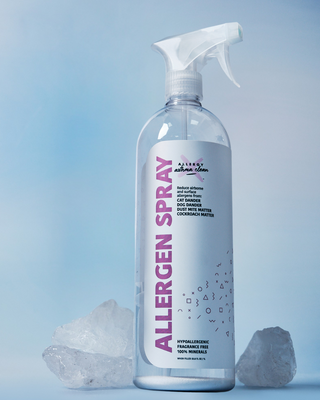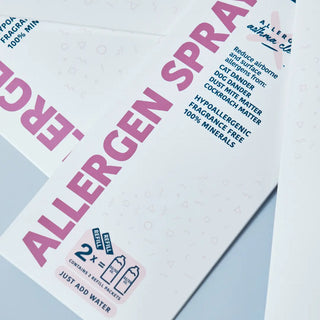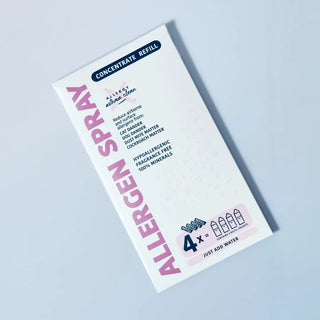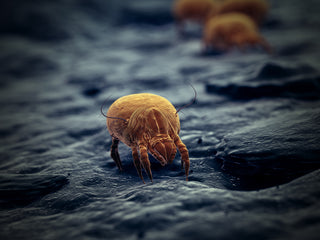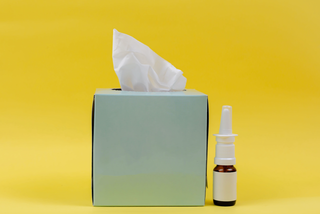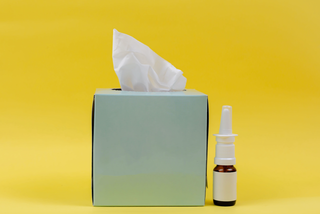Dust mites don’t bite—they trigger allergic reactions through microscopic waste and body fragments that irritate your immune system. If you’re experiencing “mystery bites,” congestion, or itchy eyes, it’s likely a dust mite allergy, not an insect problem. For a cleaner, allergy-friendly home, use a dust mite spray like Allergy Asthma Clean Allergen Spray by Allergy Defender, which neutralizes airborne and surface allergens using 100% mineral ingredients—no harsh chemicals or fragrances. Combine it with regular cleaning, hot-water laundry, and HEPA filtration for effective, natural allergy relief year-round.
Key Takeaways
-
Dust mites don’t bite—they cause allergic reactions from their waste, not from skin contact. Common symptoms include sneezing, itchy eyes, and congestion.
-
Differentiate dust mites from bed bugs: bed bugs leave visible welts; dust mite reactions are invisible and immune-based.
-
Prevent dust mite buildup by washing bedding in hot water, using allergen-proof covers, and running a dehumidifier to keep humidity below 50%.
-
Use Allergy Asthma Clean Allergen Spray by Allergy Defender, a mineral-based dust mite spray, to reduce allergens both in the air and on surfaces safely and effectively.
-
Pair allergen control with smart cleaning habits: vacuum with a HEPA filter, dust with a damp cloth, and change air filters often for long-term natural allergy relief.
Dust mites are microscopic creatures that can cause much discomfort for those with allergies. These tiny pests are often misunderstood, leading to confusion and misdiagnosis.
The Myth of Dust Mite Bites
The term "dust mite bites" is misleading. In reality, dust mites do not bite humans. They lack the physical ability to do so.
What people often attribute to dust mite bites are actually allergic reactions. These reactions are caused by dust mite feces and body fragments, not bites.
When dust mites feed on dead skin cells, they produce waste. This waste contains proteins that can trigger allergic reactions in sensitive individuals.
Symptoms often mistaken for dust mite bites include itching, redness, and swelling. These are common allergic reactions, not evidence of an actual bite.
Understanding this distinction is crucial. It helps in correctly diagnosing and treating the symptoms associated with dust mites.
Remember, if you're experiencing symptoms you believe are dust mite bites, you're likely dealing with a dust mite allergy.
Symptoms of Dust Mite Allergies
Dust mite allergies can manifest in various ways. The symptoms can range from mild to severe, depending on the individual's sensitivity.
Common symptoms include sneezing and a runny or stuffy nose. These are similar to the symptoms of a common cold, which can lead to misdiagnosis.
Many people also experience itchy, red, or watery eyes.
In some cases, dust mite allergies can trigger asthma attacks. This can lead to chest tightness, shortness of breath, and wheezing.
Here's a quick rundown of common dust mite allergy symptoms:
- Sneezing
- Runny or stuffy nose
- Itchy, red, or watery eyes
- Itchy skin or rash (which is why people think of a bite)
- Coughing
- Difficulty breathing
- Wheezing
- Chest tightness
That's a lot of symptoms! If you're experiencing these problems, especially upon waking or after dusting, you might be dealing with a dust mite allergy.
Dust Mite Bites vs. Bed Bug Bites
Bed bugs are visible to the naked eye, unlike dust mites. They are nocturnal insects that feed on human blood, leaving visible bites on the skin.
Bed bug bites often appear in a line or cluster. They can cause red, itchy welts on the skin. This is a stark contrast to dust mites, which do not bite humans.
Dust mite allergies are caused by an immune response to dust mite feces and body fragments. The symptoms do not have a distinct pattern on the skin like bed bug bites.
Diagnosing Dust Mite Allergies
If you suspect you have a dust mite allergy, get a proper diagnosis. This can help you manage your symptoms effectively so you can live with less discomfort and irritation.
Healthcare providers can diagnose dust mite allergies through skin prick tests or blood tests. These tests measure your immune system's response to dust mite allergens.
In a skin prick test, a small amount of the allergen is introduced to your skin using a tiny needle. If you're allergic, you'll develop a raised bump or hive at the test site.
A blood test, on the other hand, measures the amount of specific antibodies in your blood. High levels of these antibodies indicate an allergy.
Dust Mite Prevention
Preventing dust mite allergies involves reducing exposure to dust mites.
One effective strategy is to maintain a low humidity level in your home. Dust mites thrive in humid environments. Try using a dehumidifier.
Regular cleaning is also crucial. Vacuum with a HEPA filter vacuum cleaner and dust with a damp cloth (not a dry one) to help reduce dust mite populations.
Here are some additional prevention strategies:
- Use allergen-proof covers for mattresses and pillows.
- If you have a book case, buy a book case that encloses all books.
- Wash bedding in hot water to kill dust mites.
- Opt for non-carpeted flooring, which is less hospitable to dust mites.
- Freeze non-washable items (a favorite stuffed animal for instance) for 24 hours to kill dust mites.
- Use air purifiers with HEPA filters to capture dust mite particles.
Remember, prevention is a continuous process. Regularly carry out a cleaning schedule to help manage dust mite allergies.
Treatment Options for Dust Mite Allergies
When prevention strategies aren't enough, treatment options can help manage dust mite allergies. These treatments aim to reduce symptoms and help you live better.
Over-the-counter medications, such as antihistamines and nasal corticosteroids, can provide temporary relief. They help reduce symptoms like sneezing, runny nose, and itchy eyes.
For long-term relief, allergy immunotherapy may be considered. This treatment involves regular injections or tablets that help build tolerance to dust mite allergens over time.
Here are some additional ideas to keep dust mite allergies to a minimum:
- Regularly replace old pillows and mattresses to reduce dust mite populations.
- Consult with an allergist for personalized dust mite management strategies.
- Regularly inspect and clean air conditioning and heating systems to reduce dust mite allergens caught in your air ducts.
- Change you air filters often to help improve your indoor air quality.
- Use Allergen Spray, designed to reduce dust mites in the air on surfaces throughout your entire home. It's backed by science to be effective, uses only 100% natural ingredients, and contains no harsh chemicals. Just spray and enjoy fresh air.
When to See a Doctor
If you're experiencing persistent allergy symptoms, it's time to see a doctor. This is especially true if over-the-counter medications aren't providing relief.
They can also help to develop an asthma action plan if you have asthma.
Remember, dust mite allergies can contribute to chronic sinusitis and other respiratory conditions. So, don't delay seeking medical advice if your symptoms persist or worsen. We know it's a pain to see a health care provider but you are worth it!





